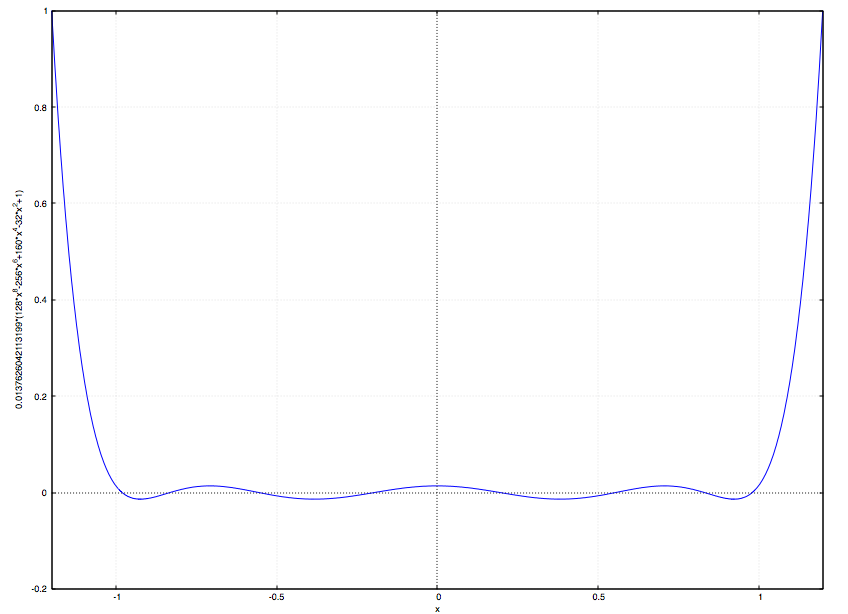 |
Reference documentation for deal.II version 9.0.0
|
 |
Reference documentation for deal.II version 9.0.0
|
Functions | |
| template<typename NumberType > | |
| std::array< NumberType, 3 > | givens_rotation (const NumberType &x, const NumberType &y) |
| template<typename NumberType > | |
| std::array< NumberType, 3 > | hyperbolic_rotation (const NumberType &x, const NumberType &y) |
| template<typename OperatorType , typename VectorType > | |
| double | lanczos_largest_eigenvalue (const OperatorType &H, const VectorType &v0, const unsigned int k, VectorMemory< VectorType > &vector_memory, std::vector< double > *eigenvalues=nullptr) |
| template<typename OperatorType , typename VectorType > | |
| void | chebyshev_filter (VectorType &x, const OperatorType &H, const unsigned int n, const std::pair< double, double > unwanted_spectrum, const double tau, VectorMemory< VectorType > &vector_memory) |
A collection of linear-algebra utilities.
| std::array<NumberType,3> Utilities::LinearAlgebra::givens_rotation | ( | const NumberType & | x, |
| const NumberType & | y | ||
| ) |
Return the elements of a continuous Givens rotation matrix and the norm of the input vector.
That is for a given pair x and y, return c , s and \sqrt{x^2+y^2} such that
\begin{bmatrix} c & s \\ -s & c \end{bmatrix} \begin{bmatrix} x \\ y \end{bmatrix} = \begin{bmatrix} \sqrt{x^2+y^2} \\ 0 \end{bmatrix}
| std::array<NumberType,3> Utilities::LinearAlgebra::hyperbolic_rotation | ( | const NumberType & | x, |
| const NumberType & | y | ||
| ) |
Return the elements of a hyperbolic rotation matrix.
That is for a given pair x and y, return c , s and r such that
\begin{bmatrix} c & -s \\ -s & c \end{bmatrix} \begin{bmatrix} x \\ y \end{bmatrix} = \begin{bmatrix} r \\ 0 \end{bmatrix}
Real valued solution only exists if |x|>|g|, the function will throw an error otherwise.
| double Utilities::LinearAlgebra::lanczos_largest_eigenvalue | ( | const OperatorType & | H, |
| const VectorType & | v0, | ||
| const unsigned int | k, | ||
| VectorMemory< VectorType > & | vector_memory, | ||
| std::vector< double > * | eigenvalues = nullptr |
||
| ) |
Estimate an upper bound for the largest eigenvalue of H by a k -step Lanczos process starting from the initial vector v0. Typical values of k are below 10. This estimator computes a k-step Lanczos decomposition H V_k=V_k T_k+f_k e_k^T where V_k contains k Lanczos basis, V_k^TV_k=I_k, T_k is the tridiagonal Lanczos matrix, f_k is a residual vector f_k^TV_k=0, and e_k is the k-th canonical basis of R^k. The returned value is ||T_k||_2 + ||f_k||_2. If eigenvalues is not nullptr, the eigenvalues of T_k will be written there.
vector_memory is used to allocate memory for temporary vectors. OperatorType has to provide vmult operation with VectorType.
This function implements the algorithm from
| void Utilities::LinearAlgebra::chebyshev_filter | ( | VectorType & | x, |
| const OperatorType & | H, | ||
| const unsigned int | n, | ||
| const std::pair< double, double > | unwanted_spectrum, | ||
| const double | tau, | ||
| VectorMemory< VectorType > & | vector_memory | ||
| ) |
Apply Chebyshev polynomial of the operator H to x. For a non-defective operator H with a complete set of eigenpairs H \psi_i = \lambda_i \psi_i, the action of a polynomial filter p is given by p(H)x =\sum_i a_i p(\lambda_i) \psi_i, where x=: \sum_i a_i \psi_i. Thus by appropriately choosing the polynomial filter, one can alter the eigenmodes contained in x.
This function uses Chebyshev polynomials of first kind. Below is an example of polynomial T_n(x) of degree n=8 normalized to unity at -1.2.

|
By introducing a linear mapping L from unwanted_spectrum to [-1,1], we can dump the corresponding modes in x. The higher the polynomial degree n, the more rapid it grows outside of the [-1,1]. In order to avoid numerical overflow, we normalize polynomial filter to unity at tau. Thus, the filtered operator is p(H) = T_n(L(H))/T_n(L(\tau)).
The action of the Chebyshev filter only requires evaluation of vmult() of H and is based on the recursion equation for Chebyshev polynomial of degree n: T_{n}(x) = 2x T_{n-1}(x) - T_{n-2}(x) with T_0(x)=1 and T_1(x)=x.
vector_memory is used to allocate memory for temporary objects.
This function implements the algorithm (with a minor fix of sign of \sigma_1) from
tau is equal to std::numeric_limits<double>::infinity(), no normalization will be performed. 1.8.14
1.8.14